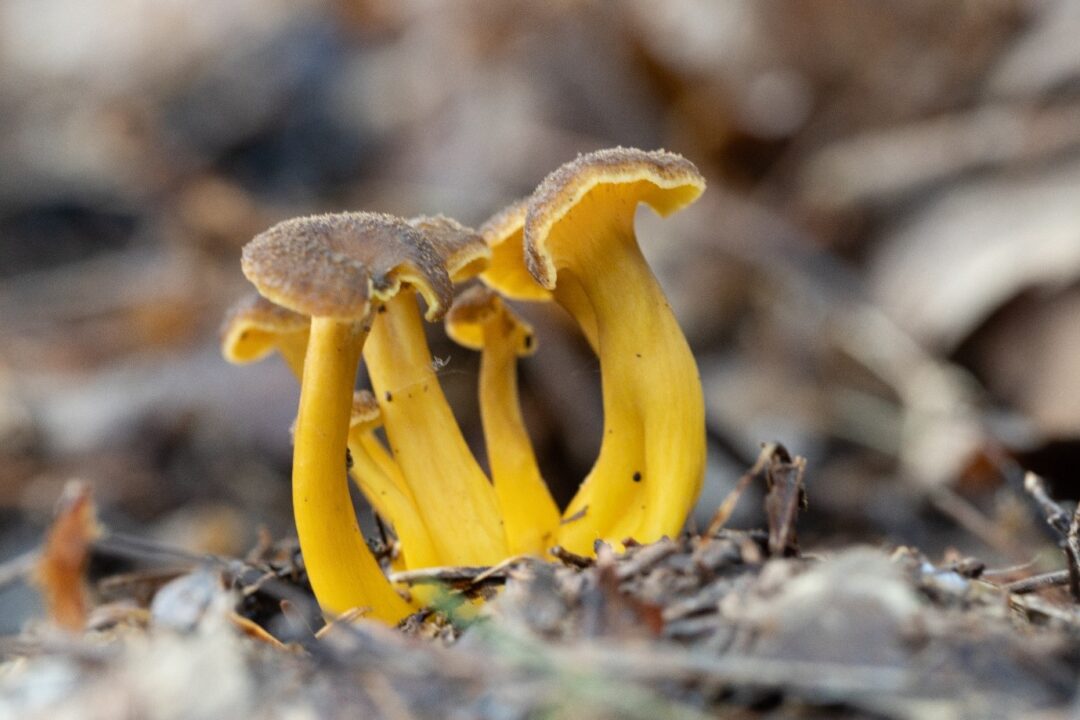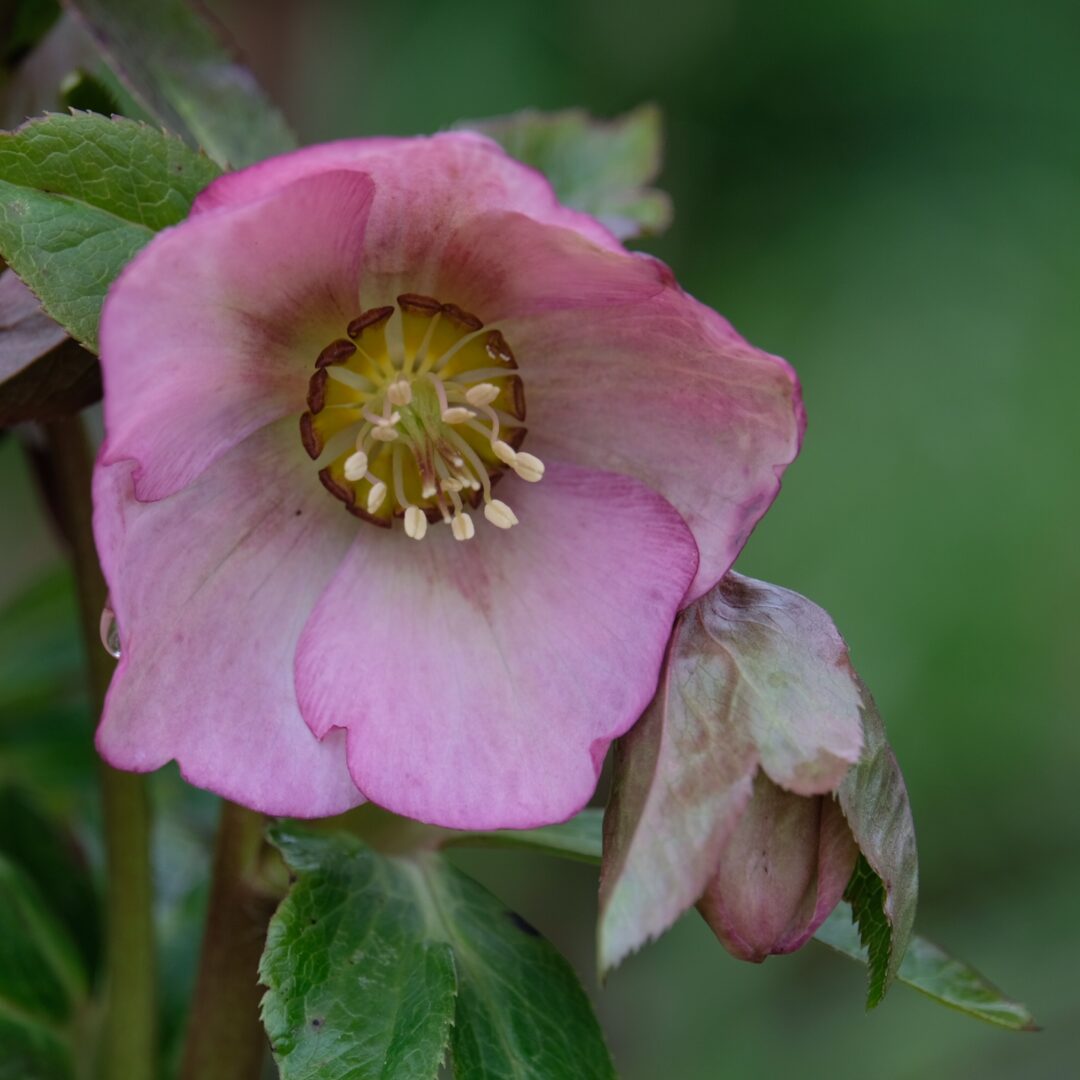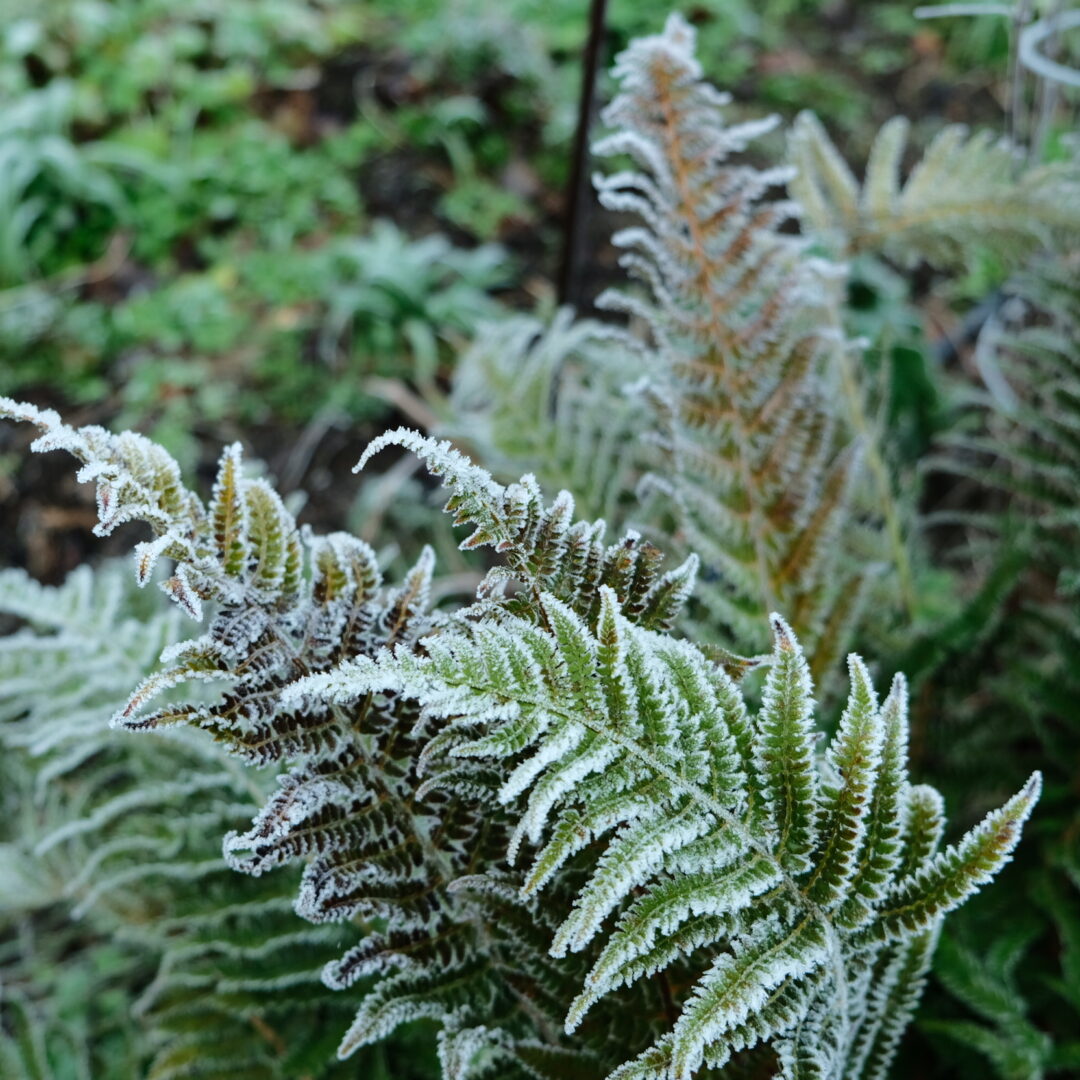January 24th, 2023
Lufendliche stede, a lovely place, is the Anglo-Saxon word for garden. Even in this weather, the garden is busy with birds – a blackbird in the hawthorn tree, blue tits pecking at the winter flowering honeysuckle. Stray primrose flowers are testing the temperature, worn ragged by their efforts. The harbingers of spring – the hazel catkin and the snowdrop – are beginning to show in sheltered areas. The hellebores continue to flourish.
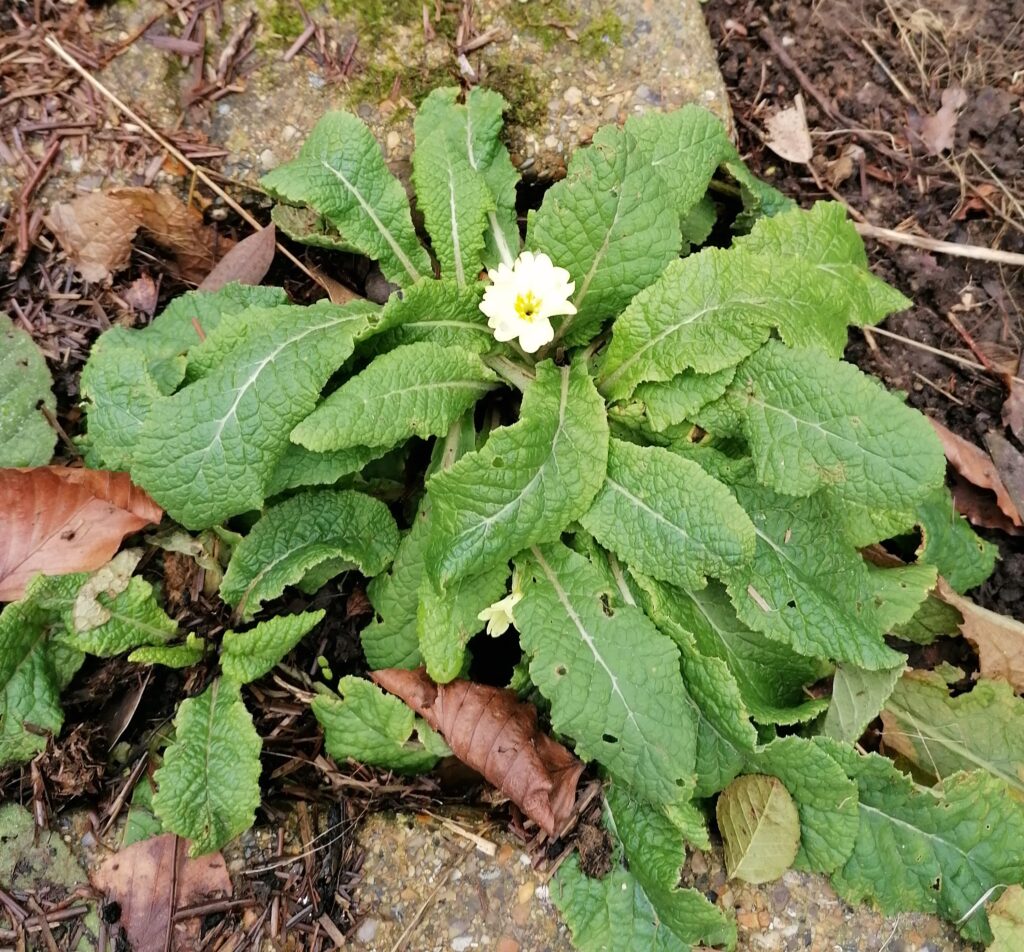
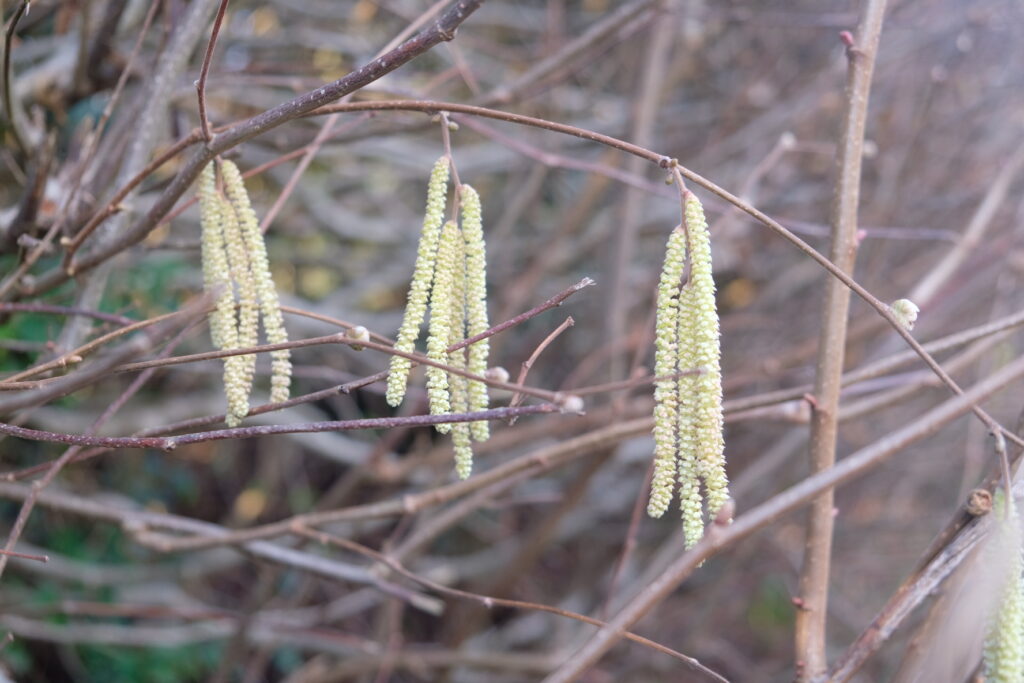
The Snowdrop
…There’s no telling.
But what a beauty, what a mighty power
of patience kept intact is now in flower.
Alice Oswald, ‘The Snowdrop’ from Weeds and Wildflowers (Faber and Faber: 2009)
I commend to you this beautiful poem by Alice Oswald from her stunning collection Weeds and Wildflowers which captures the feeling of the time of year and the beauties of the flower.
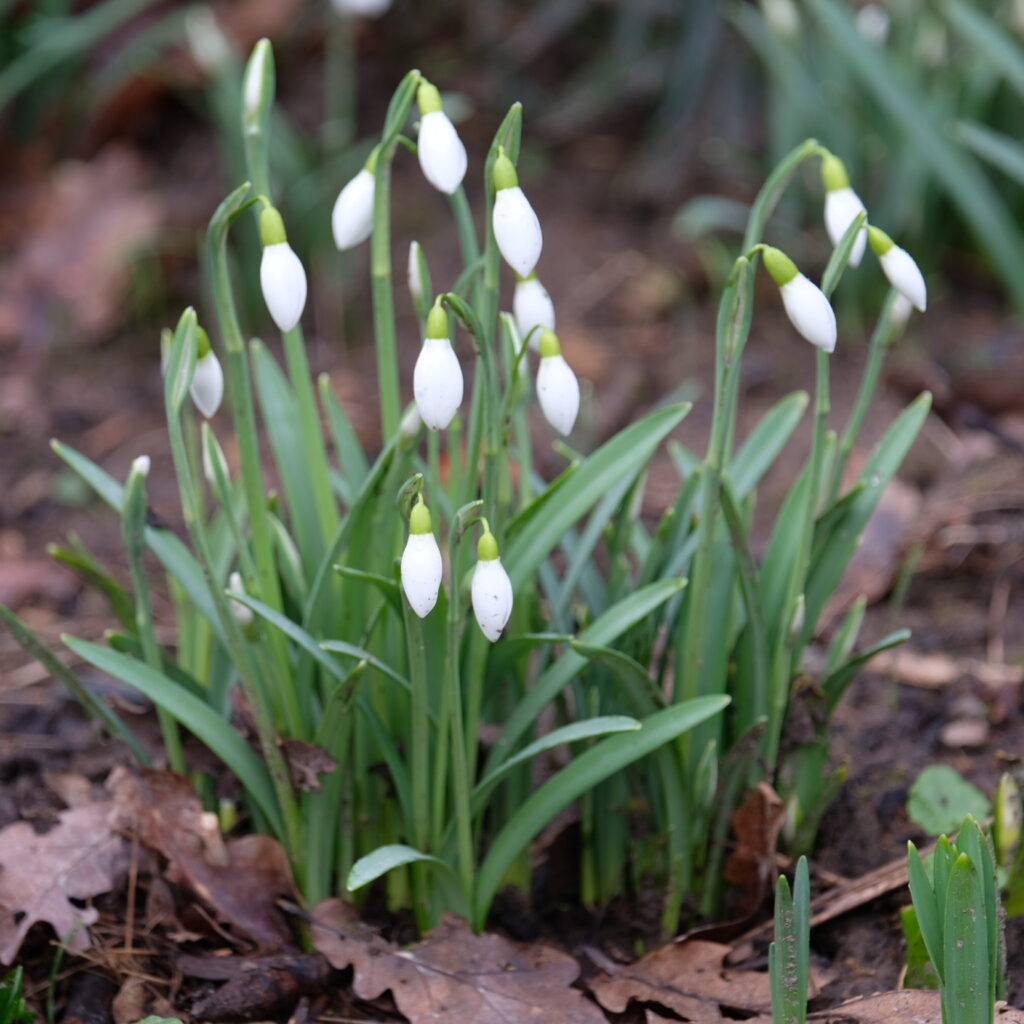
Galanthus nivalis, the common snowdrop (although nothing seems common about this pearl of a flower), lightens up the gloom of winter. The name can be translated as Milk flower from the Greek gala meaning milk and anthos meaning flower. The Latin nivalis means ‘of the snow’.
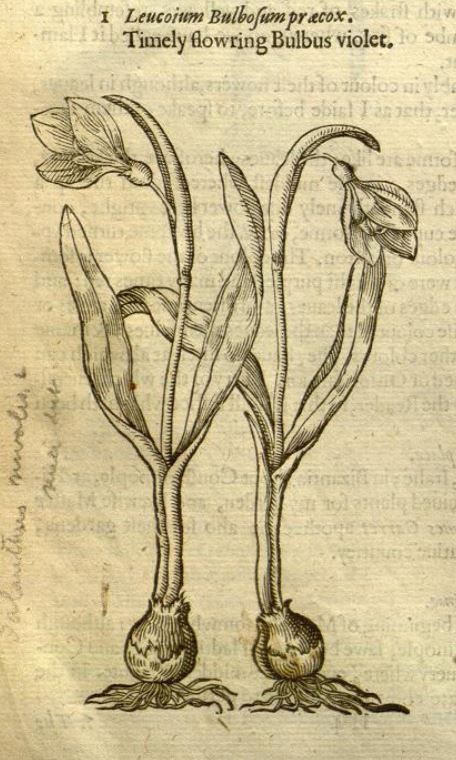 The snowdrop was introduced into this country by the sixteenth century as there is a picture of it in Gerard’s Herbal (published 1597). The name he gives it is ‘Timely flowring Bulbus violet’ and then adds ‘some call them also snowdrops’.
The snowdrop was introduced into this country by the sixteenth century as there is a picture of it in Gerard’s Herbal (published 1597). The name he gives it is ‘Timely flowring Bulbus violet’ and then adds ‘some call them also snowdrops’.
In Richard Mabey’s Flora Britannica, we are treated to a list of the snowdrop’s folk names: Candlemas bells, Mary’s taper, Snow piercer (its leaf tips are specially designed for breaking though frosty ground), February fairmaids, Dingle dangle. He goes on to wonder whether the snowdrop is native or naturalised. A Mrs Legge wonders whether snowdrops were first planted by nuns – many colonies of snowdrops are to be found in church grounds. Snowdrops can often outlive the houses whose gardens they grew in.
In the language of flowers the snowdrop represents hope, or purity, and sometimes it is associated with mourning.
Galanthophiles collect snowdrops and there are many different varieties. These are just a small sample of the many: Galanthus nivalis ‘Flore Pleno’, the double snowdrop; Galanthus elwessi, Galanthus ‘Hippolyta’, Galanthus ‘Anglesey Abbey’, Galanthus ‘Anglesey Orange Tip’, which looks as though it is glowing. A very large selection of snowdrops can be found in the Avon Bulb Catalogue.
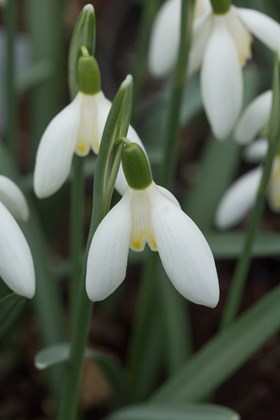

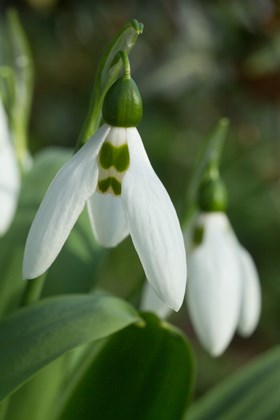
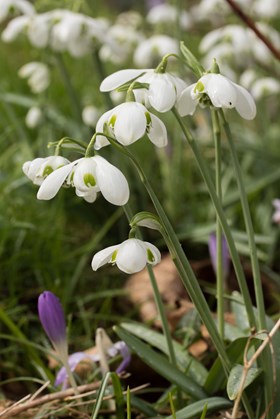
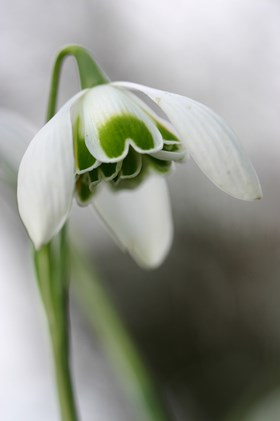
Dipping into History
There are no written records of gardens in Tenterden in the Anglo-Saxon era. However, it is likely that gardens would have been planted. These gardens would have been primarily utilitarian, providing food, flavourings, medicines, and dyes. Wyrttun was another name for garden, an orchard garden; lectun is a vegetable enclosure. Meadow sweet was named medowyrt, the plant that flavoured mead; yarrow as gearwe, which was used to treat wounds.
The following fragments provide background information about life before AD1000 and give an indication of what was grown and the importance that was given to gardens.
In Aelfric’s Colloquy (AD995) some two hundred plants are named. The Lucy Cavendish Anglo-Saxon Garden in Cambridge uses the Colloquy as a reference guide as well as materials from Bald’s Leechbook (a medical textbook of AD 900 – 950), the writings of the Venerable Bede (673-735), Alcuin, and St. Ethelwold and materials from Winchester, St. Albans and Ely. The focus of the garden is to show plants that were used for culinary purposes, for fruits or flavourings, for their medicinal properties, for their perfumes, for use as strewing herbs, for dyeing, as insecticides. Medicinal herbs were: angelica, balm, cinquefoil, columbine (not a good idea!), corncockle, cornflower, corn marigold, coriander, daisy, dill, fennel, feverfew, flax, mallow, pot marigold, meadow saffron, mint, mugwort, poppy, opium poppy, radish, strawberry and violet. For more information go to: https://www.rumwoldstow.org/2020/03/23/the-anglo-saxon-garden-at-lucy-cavendish-college/
St Augustine’s mission to convert Britain began in Kent in AD570, and the abbey of St Peter and St Paul (later rededicated as St Augustine’s Abbey) was founded c.AD598. The abbey was a Benedictine abbey. St Benedict wrote the first monastic rule c.AD 530. The monastery was dedicated to serving God without distraction under the leadership of the abbot. It gave hospitality, medical help, provided teaching and dispensed alms to those nearby. The necessities of life fort hose who lived in the Benedictine Order were: water, a mill to make grain, and a garden. Benedictine monasteries farmed land for grain, dug fishponds, kept bees and grew fruits and vegetables, healing herbs and plants that were used to make ink, dyes and incense.
In AD800 Charlemagne sent for Alcuin of York, a renowned intellectual, to establish the court school – there was a shared appreciation of scholarship and education and learning were promoted. In the Capitulare de Villis, a guide to the management of royal estates, a plant list is given for gardens: ‘It is our wish that they shall have in their gardens all kinds of plants: lily, roses, fenugreek, costmary, sage, rue, southernwood, cucumbers, pumpkins, gourds, kidney-bean, cumin, rosemary, caraway, chick-pea, squill, gladiolus, tarragon, anise, colocynth, chicory, ammi, sesili, lettuces, spider’s foot, rocket salad, garden cress, burdock, penny-royal, hemlock, parsley, celery, lovage, juniper, dill, sweet fennel, endive, dittany, white mustard, summer savoury, water mint, garden mint, wild mint, tansy, catnip, centaury, garden poppy, beets, hazelwort, marshmallows, mallows, carrots, parsnip, orach, spinach, kohlrabi, cabbages, onions, chives, leeks, radishes, shallots, cibols, garlic, madder, teazles, broad beans, peas, coriander, chervil, capers, clary. And the gardener shall have house-leeks growing on his house. As for trees, it is our wish that they shall have various kinds of apple, pear, plum, sorb, medlar, chestnut and peach; quince, hazel, almond, mulberry, laurel, pine, fig, nut and cherry trees of various kinds. The names of apples are: gozmaringa, geroldinga, crevedella, spirauca; there are sweet ones, bitter ones, those that keep well, those that are to be eaten straightaway, and early ones. Of pears they are to have three or four kinds, those that keep well, sweet ones, cooking pears and the late-ripening ones.’ This is probably a list for Francia, which had a more temperate clime than England, but it does give insight into how important gardens were in this era.
Bibliography
Hatfield, Frances, Hatfield’s Herbal
Mabey, Richard, Flora Britannica
Uglow, Jenny, A Little History of British Gardening
McLean, Teresa, Medieval English Gardens


